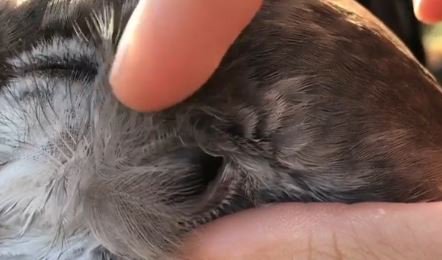Video: This is what an owl’s ear looks like

MANY OWLS combine sharp vision with astonishingly acute hearing. They can detect sounds 10 times fainter than a human can. To varying degrees, the different owl species share an extraordinary ear feature: one ear opening is higher than the other.
This asymmetry enables an owl to instantly pinpoint the source of a sound (the rustle of a rat in undergrowth, for instance). Without this asymmetry, the owl would have to tilt its head to one side to make the fix, wasting precious seconds.
Studies of owl brains have shown that the medulla, the area in the brain associated with hearing, is much more complex than in other birds. Tyto owls have a further refinement to improve hearing.
The marked facial disc of this genus acts like a pair of satellite dishes, collecting sound and funnelling it to the ears, which lie at the side of the head behind the eyes. The disc feathers are tightly packed to help channel the sound, and the owl can alter the shape of the disc with special facial muscles. Such sound-detection mechanisms would be useless if the owl were a noisy flyer.
The whooshing of its wings would obscure the tiny rustle of an animal on the ground, and the prey would hear the owl coming well before the owl’s talons locked on. So owls that hunt by night have special feathers to cut flight noises almost to nil.
Footage courtesy of Taryn Smith.
READ MORE:

